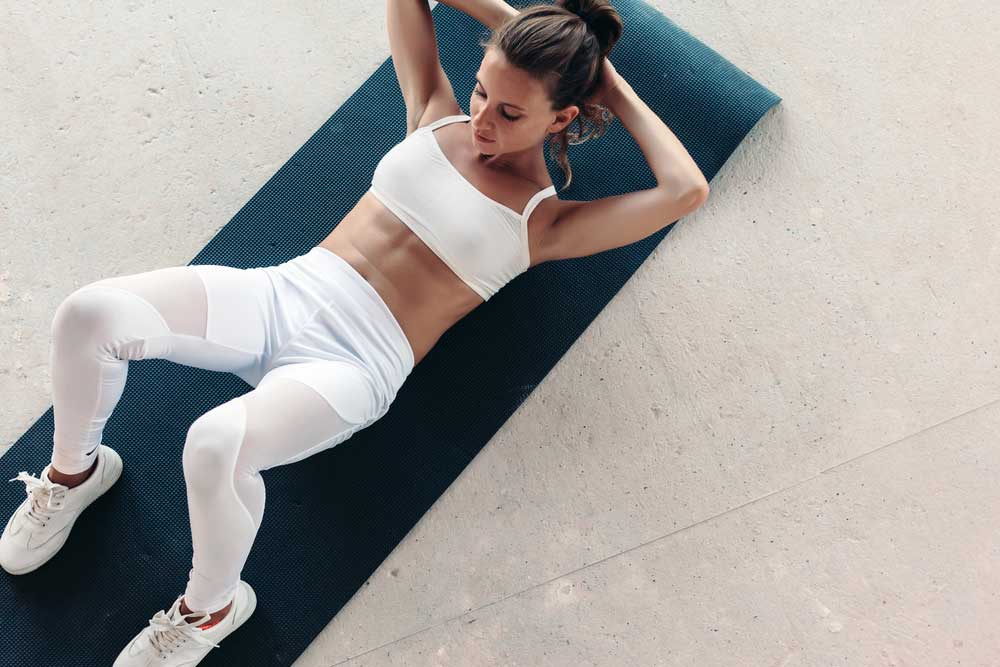
Traditional liposuction is a surgical procedure that is followed by an important period of healing and downtime. During your liposuction recovery, one thing you will experience is swelling around the treatment site. While completely normal, this post-lipo swelling takes time to subside. Luckily, there are ways to speed up this process for quicker and safer recovery.
If you are considering getting liposuction with Dr. Kahlil Andrews at Dr. Andrews Plastic Surgery, then you probably have questions about post-lipo swelling and possible ways to reduce it. Dr. Andrews will thoroughly discuss this with you during your consultation. But if you want a quick primer, here is more on post-lipo swelling and what you should do to manage it.
What Is Post-Lipo Swelling?
Post-liposuction swelling is a result of the body’s normal reaction to surgical trauma. When there is any kind of injury to tissue, the body reacts by increasing blood flow to the injury site to deliver cells that are part of the innate immune system. This increase of fluid in the area causes tissues to swell.
While tissue swelling often happens due to inflammation and infection, this isn’t the case with post-lipo swelling. What is happening here is that the body is trying to remove intracellular contents released by damaged and dying cells. This is known as sterile inflammation and is caused by physical injury to fat and other tissues during liposuction.
Post-lipo swelling becomes noticeable around days one and two following treatment. It then gradually continues to increase over the course of two weeks. After that time, the swelling slowly starts to subside and should be completely gone by three months. You’ll likely experience mild pain and discomfort with this swelling.
How Do You Reduce Post-Lipo Swelling?
To reduce post-lipo swelling, ease pain and speed up recovery, there are a few steps we recommend taking:
Compression Garments
Once your surgery is complete, the treatment area will be dressed and wrapped in a compression garment to reduce swelling. You will be advised to wear a compression garment for several weeks or until your swelling subsides.
Compression garments are usually designed as waist-to-knee shapewear. They are made from synthetic fabrics like nylon and lycra, making them both strong and stretchy. Compression garments apply even pressure over the treatment area, which speeds up lymphatic drainage and even reduces pain and discomfort. You may need to wear your compression garments for a total of six weeks.
These garments come in different shapes, sizes, colors and levels of compression. Dr. Andrews will offer recommendations on what type and level of compression you will need for your post-lipo recovery. It is important to get the right level of compression and the proper size of the garment since poorly fitting garments can alter your final results. Shapewear cannot be used in place of a compression garment.
Lymphatic Drainage Massage
Also called manual lymphatic drainage, a lymphatic drainage massage is a gentle massage normally used to relieve lymphedema. It can also help reduce swelling following surgical procedures like liposuction.
This medical massage treatment encourages the removal of lymph fluid from swollen tissues. Lymph fluid moves between cells when there is an injury and is normally drained through the lymphatic system, which is part of your body’s immune system. While a healthy body is perfectly capable of draining lymph by itself, we can speed up this process by gently massaging the affected area.
You can get this treatment from a licensed massage therapist or perform it yourself at home. However, it is important to know what you are doing before practicing lymphatic self-massage. The University Health Network (UHN) offers a helpful self-massage guide for patients with lower body lymphedema. Some of the advice there can be useful for you too:
- Keep your hands soft and relaxed while using light pressure.
- Use the flats of your hands instead of your fingertips to get more skin-to-skin contact.
- Massage away from the treatment site towards areas not affected by swelling.
- Stop if you are in any kind of pain or discomfort.
Light Activity
In the first two days after your procedure, your focus should be on rest and keeping your activity levels to a minimum. After that time, we encourage patients to start moving to prevent blood clots and also to help reduce swelling. This should involve light activities, like walking around your home or neighborhood.
Once you are feeling better, which can take four to six weeks, you can return to more vigorous exercising. When you start to introduce vigorous exercise, make sure you do so gradually, starting with gentle stretches, then moving on to light aerobics like running and cycling before proceeding with high-intensity workouts.
Other Useful Tips
Being careful about your dietary choices can also help reduce swelling following liposuction. Salt is known to contribute to fluid retention, so you may want to reduce your intake while you’re recovering. Try to increase your fruit and vegetable intake and keep ultra-processed foods to a minimum since many are high in salt and sodium.
It’s also a good idea to avoid alcohol. Alcohol causes dehydration, which makes the body try and hold onto as much fluid as possible. If you’ve ever experienced post-booze puffiness, you’ll know this is definitely true.
Contact Dr. Andrews Plastic Surgery
If you have more questions about liposuction recovery or surgical recovery in general, please contact Dr. Andrews Plastic Surgery at 319-450-7619. Our team would be happy to provide more information or schedule a consultation for you.




